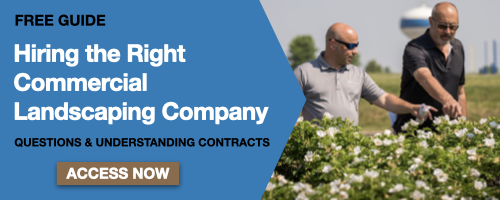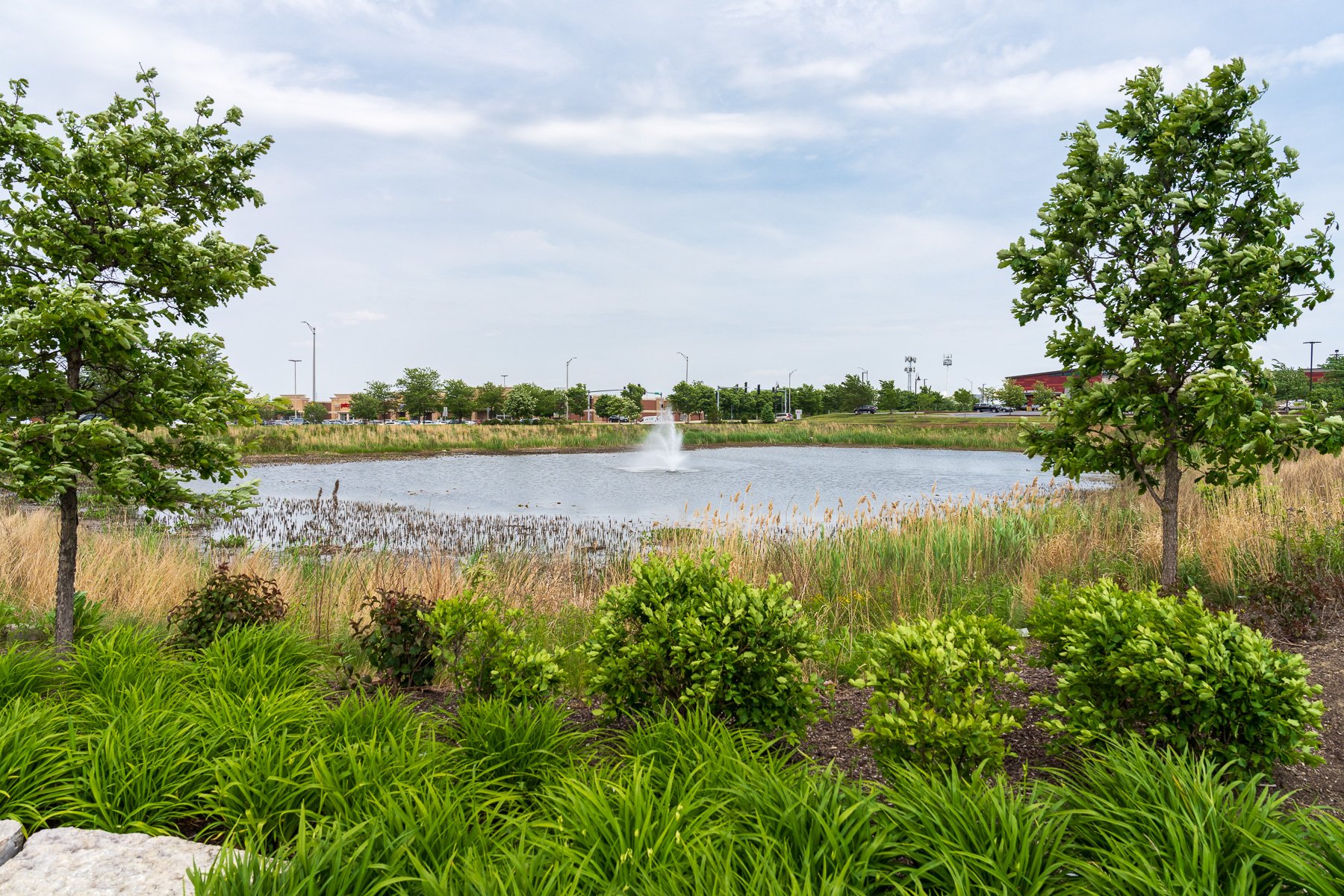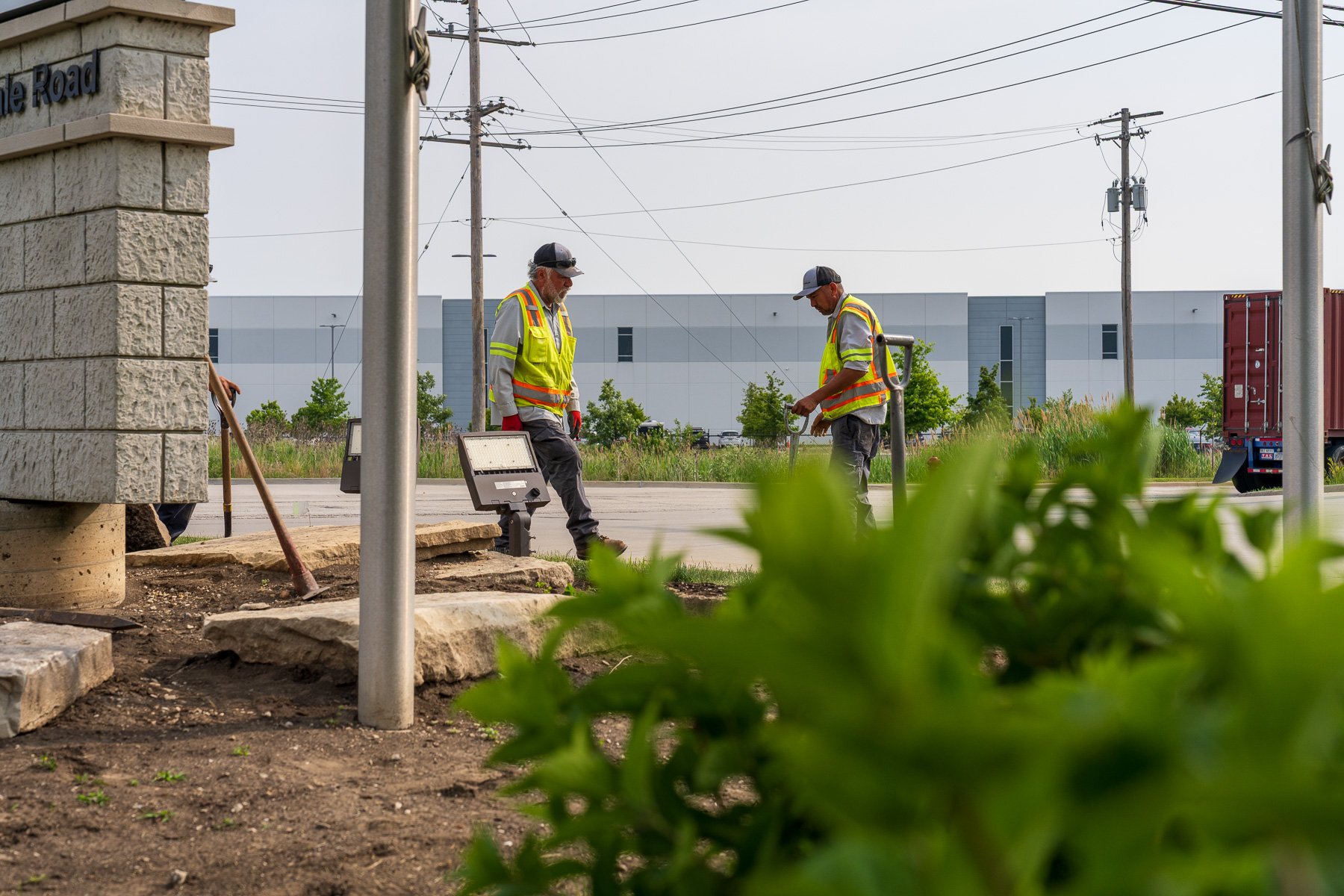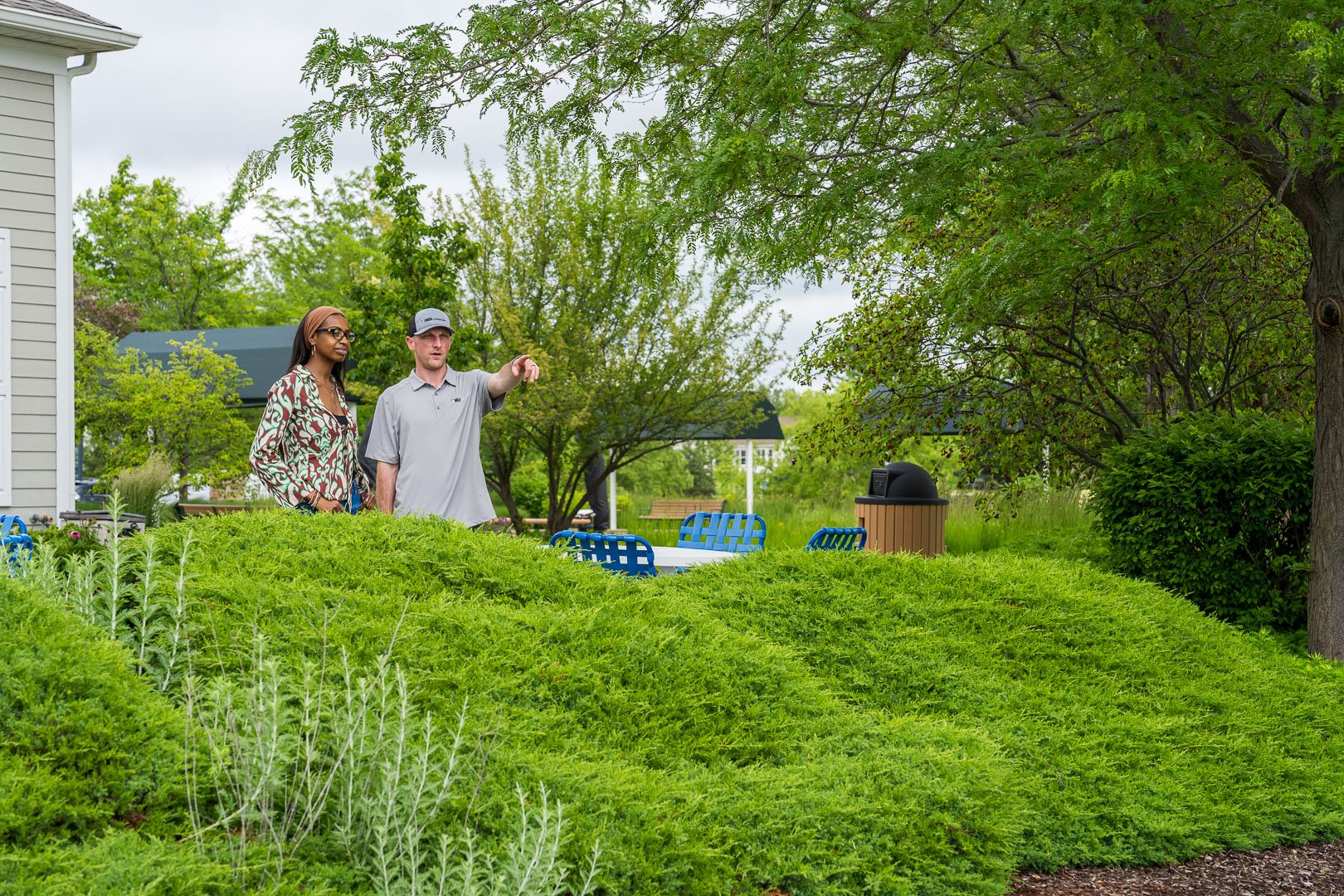No one ever said managing commercial properties in Chicagoland was easy—especially when your responsibilities stretch from HVAC repairs to tenant requests and outdoor aesthetics. But if your landscape looks neglected, it sends the wrong message before anyone even walks through your door.
As a commercial property manager, you know how critical first impressions are. A well-maintained landscape isn’t just about curb appeal—it influences tenant satisfaction, foot traffic, safety, and even your facility’s operating costs.
This guide will walk you through the most common landscaping challenges faced by property and facility managers in Greater Chicago—and the strategies that successful professionals use to stay ahead of them.
Whether you manage industrial parks, retail centers, healthcare campuses, or HOAs, this is your go-to resource for solving landscaping problems, maximizing your budget, and finding a trusted landscape maintenance partner in Chicagoland.
What's Included:
Why Your Commercial Landscape Matters
Understanding Landscape Maintenance in Chicagoland
Common Commercial Landscaping Problems & Expert Solutions
Enhancing Landscape Aesthetics and Functionality
Sustainable Landscaping Practices
Choosing the Right Commercial Landscaping Company in Greater Chicago
Why Your Commercial Landscape Matters
What your property looks like on the outside is just as important as what happens inside. In fact, it’s often the first (and most lasting) impression visitors, clients, tenants, and even employees will have.
The ROI of a Well-Maintained Landscape
- A healthy, polished landscape:
- Increases property value and tenant retention
- Supports brand reputation and professionalism
- Improves safety by reducing trip hazards and visibility issues
- Boosts revenue by making your space more inviting and functional
- Reduces liability through proactive maintenance and snow/ice management
When your site looks neglected—overgrown grass, dying plants, broken hardscapes—it affects how people perceive your entire operation. And that perception has a direct impact on leasing decisions, customer traffic, and even employee productivity.
If you want to avoid costly repairs, attract tenants, and keep visitors coming back, your landscape maintenance plan can’t be an afterthought.
Understanding Landscape Maintenance in Chicagoland
What Is Commercial Landscape Maintenance?
Commercial landscape maintenance is a year-round strategy designed to keep every inch of your exterior space functional, attractive, and safe. For Chicago-area properties, that means adapting to intense seasonal shifts and handling the unique needs of high-traffic, high-visibility locations.

A professional maintenance plan should cover:
- Mowing and turf care
- Tree and shrub pruning
- Seasonal planting and clean-up
- Irrigation system checks and repairs
- Snow and ice removal
- Litter control and general grounds upkeep
Think of it like car maintenance: skipping oil changes and tire rotations eventually leads to breakdowns. The same goes for your landscape—if you delay basic care, you'll face higher costs later due to plant replacement, erosion, or emergency repairs.

Why It Matters for Chicago Facilities
In Chicagoland, your landscape must survive harsh winters, hot humid summers, and everything in between. That makes consistency and local expertise essential. The wrong timing for pruning, fertilizing, or snow prep can cost you in both dollars and damage.
KD Landscape specializes in handling the diverse needs of:
- Industrial facilities
- Office parks
- Retail centers
- Healthcare and municipal campuses
- Homeowners’ associations
A proactive maintenance partner will help you reduce long-term costs, enhance safety, and keep your property aligned with seasonal and regulatory demands.
Common Commercial Landscaping Problems & Expert Solutions
Even the most seasoned property managers face recurring landscaping headaches. But the good news? Most of these issues are preventable with the right maintenance partner and proactive strategy.
Let’s look at the most common landscaping challenges across Greater Chicago—and how to solve them efficiently without blowing your budget.
Problem 1: Unhealthy or Damaged Turf Areas
Your lawn is one of the largest, most visible parts of your property. Discolored patches, thinning turf, and bare spots aren’t just cosmetic problems—they signal deeper issues like soil compaction, disease, or poor irrigation.
Solutions:
- Implement a year-round commercial lawn care program, including fertilization, weed control, and correct mowing practices.
- Aerate and overseed in the fall to combat compaction and encourage lush regrowth.
- Install smart irrigation systems to prevent over- or under-watering.
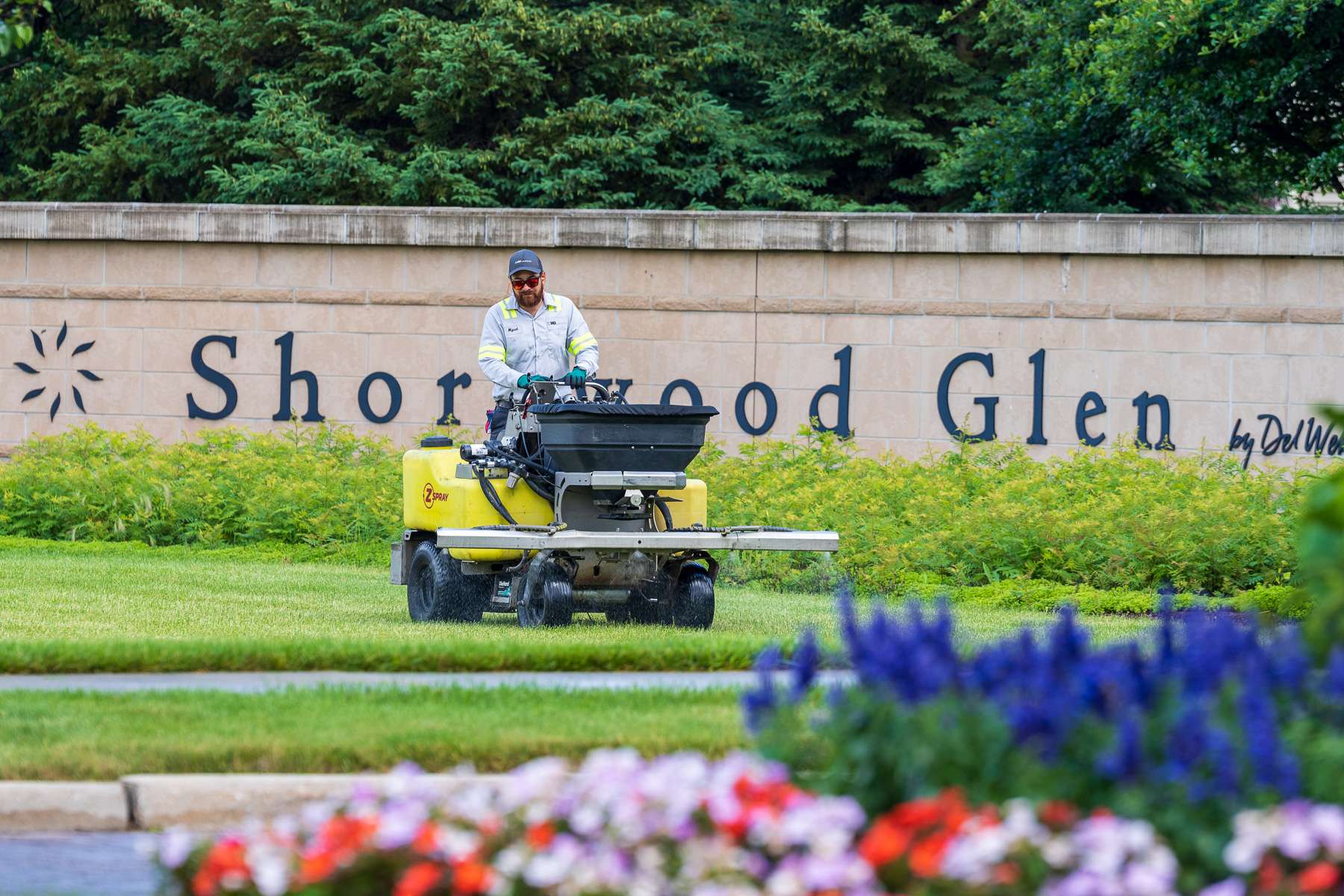
Local Tip: Turf stress is common in high-traffic Chicagoland areas. KD Landscape uses region-specific seed blends and timing strategies to optimize turf health.
Problem 2: Pests, Disease, and Plant Decline
Shrubs, trees, and perennials play a major role in property aesthetics—but they're also vulnerable to pests, fungal diseases, and weather stress.
Solutions:
- Schedule regular inspections by a trained horticulture team.
- Use disease-resistant plant varieties suited for Chicago’s climate.
- Treat infestations early with environmentally responsible pest management practices.
Problem 3: Water Management and Drainage Issues
Water is a critical asset—but when it’s mismanaged, it becomes a liability. Standing water, overwatering, and erosion are all red flags.
Solutions:
- Audit your irrigation system for leaks, broken heads, and inefficiencies.
- Address drainage issues with solutions like grading, French drains, detention ponds, or rain gardens.
- Install moisture sensors and smart controllers to regulate watering schedules.
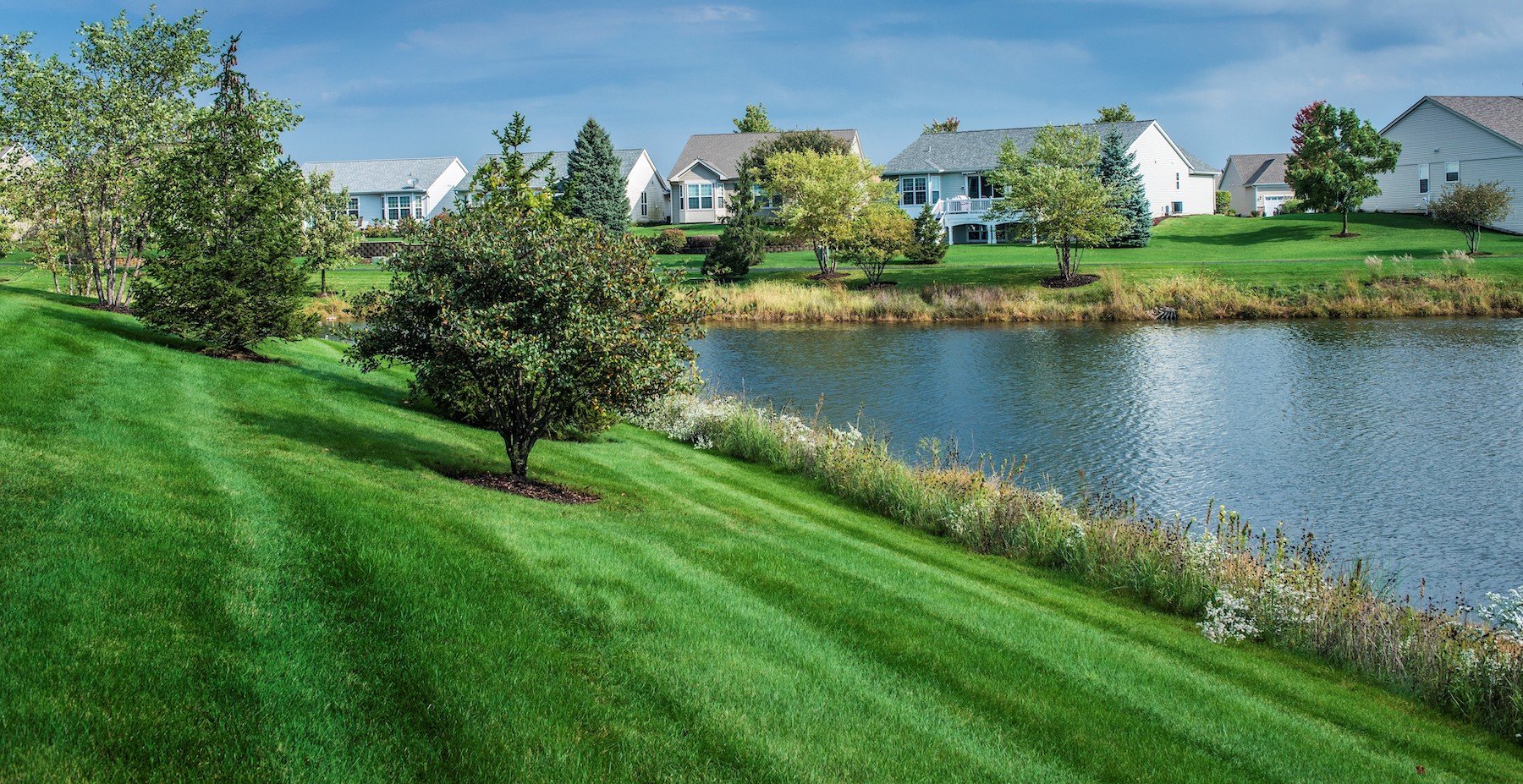
Safety First: Standing water isn’t just unattractive—it can create slip hazards, attract mosquitoes, and accelerate hardscape damage.
Problem 4: Seasonal Landscape Challenges in Greater Chicago
Chicagoland’s four-season climate creates unique landscaping demands throughout the year. Property managers need to adjust maintenance plans for each season to protect curb appeal, ensure safety, and avoid costly repairs.
Here's how to stay proactive through spring, summer, fall, and winter:
Spring: Rejuvenation & Repair
Chicago springs typically begin in mid-March, bringing temperatures from the low 30s to high 60s, with frequent rainfall.
Key tasks:
- Repair winter damage to turf and hardscapes caused by snow and ice.
- Prune dead or damaged branches from trees and shrubs to promote healthy growth.
- Clean up debris and trash to restore neatness and prevent pest habitats.
- Apply fresh mulch for weed suppression, moisture retention, and a polished look.
- Fertilize lawns and begin proper mowing practices to encourage dense turf.
- Plant spring color using bulbs or cool-season annuals for early aesthetic impact.
Tip: Spring clean-up sets the tone for the rest of the year. Don’t delay—it’s your best window to reset your landscape.
Summer: Maintenance & Monitoring
From mid-June through early September, Greater Chicago sees high humidity and average highs in the upper 80s.
Key tasks:
- Maintain mowing frequency to keep lawns tidy and healthy.
- Irrigate wisely: Ensure your lawn receives 1" to 1.5" of water per week.
- Add vibrant summer annuals to enhance entrances, signage, and gathering areas.
- Monitor for pests, disease, and drought stress—this is peak pressure season.
Pro Insight: Regular visits from a trained landscape crew are crucial during summer to catch and correct problems early.
Fall: Prep & Protect
Fall typically arrives in mid-September, with cooling temps from 40–60°F and colorful foliage.
Key tasks:
- Remove fallen leaves regularly to prevent turf diseases like snow mold.
- Cut back perennials and ornamental grasses for a cleaner winter appearance.
- Fertilize and overseed turf areas to strengthen root systems before winter.
- Install fall color using hardy varieties like mums, kale, violas, and pansies.
- Winterize irrigation systems to avoid freeze damage.
Safety Note: Leaf buildup on walkways creates slippery conditions. Regular removal protects both pedestrians and your liability.
Winter: Safety & Structure
Winter starts as early as early December in Chicago, with temperatures often dipping below 20°F and frequent snow and ice.
Key tasks:
- Dormant prune trees and shrubs to shape growth and remove weak limbs.
- Protect vulnerable plants by wrapping them or applying anti-desiccant sprays.
- Execute snow and ice management plans, including plowing, salting, and de-icing.
- Use evergreen boughs and winter interest plants for off-season curb appeal.
Winter Strategy Tip: Snow and ice buildup isn’t just inconvenient—it’s a serious liability for commercial properties. Having a landscaping partner who offers 24/7 winter weather response ensures safer walkways, accessible entrances, and peace of mind for tenants and visitors alike.
Problem 5: Budget Constraints & Cost Overruns
Limited resources don’t have to mean subpar landscapes. The key is value-driven strategy—doing the right work at the right time.
Cost-Saving Strategies:
- Prioritize essential seasonal tasks to avoid expensive fixes later.
- Choose native plants for lower maintenance and long-term resilience.
- Rotate mulch and perennial beds for ongoing visual impact without overspending.
- Work with a partner who provides transparent pricing and budget forecasts.
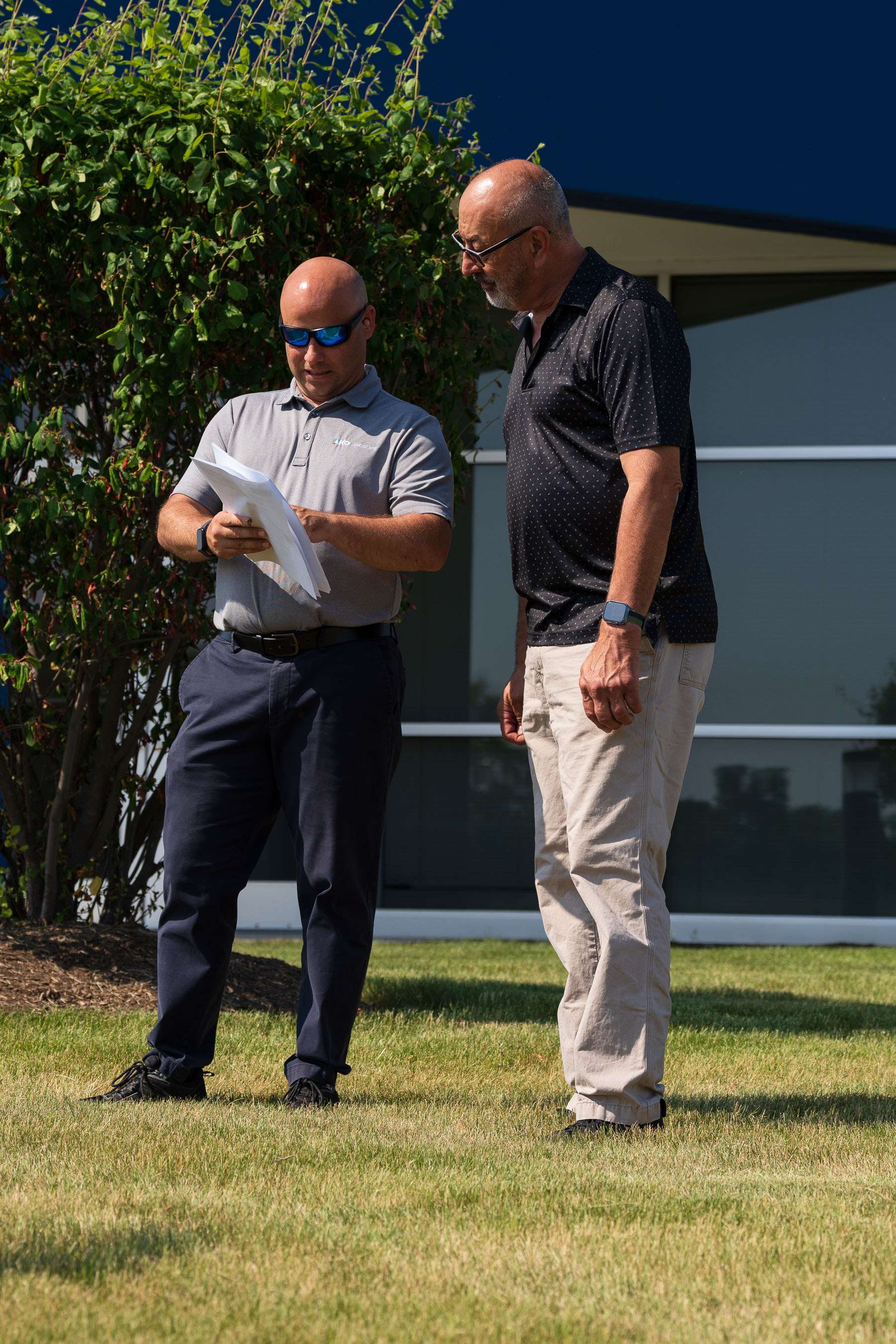
Expert Tip: KD Landscape offers scalable service plans tailored to Chicagoland properties, helping you stretch every dollar without sacrificing curb appeal.
Enhancing Landscape Aesthetics and FunctionalityA commercial property’s appearance is more than just visual appeal — it’s a reflection of your professionalism, brand values, and attention to detail. For property managers in Greater Chicago, an attractive and well-functioning landscape directly impacts leasing success, visitor impressions, and even employee morale.
Why Aesthetics Matter for Commercial Sites
A well-maintained landscape can:
- Improve property value and tenant retention
- Boost curb appeal and customer traffic
- Support branding and public perception
- Create usable, welcoming outdoor spaces for tenants and guests
Neglected landscapes, on the other hand, can leave a negative impression, reduce safety, and increase maintenance costs down the road.
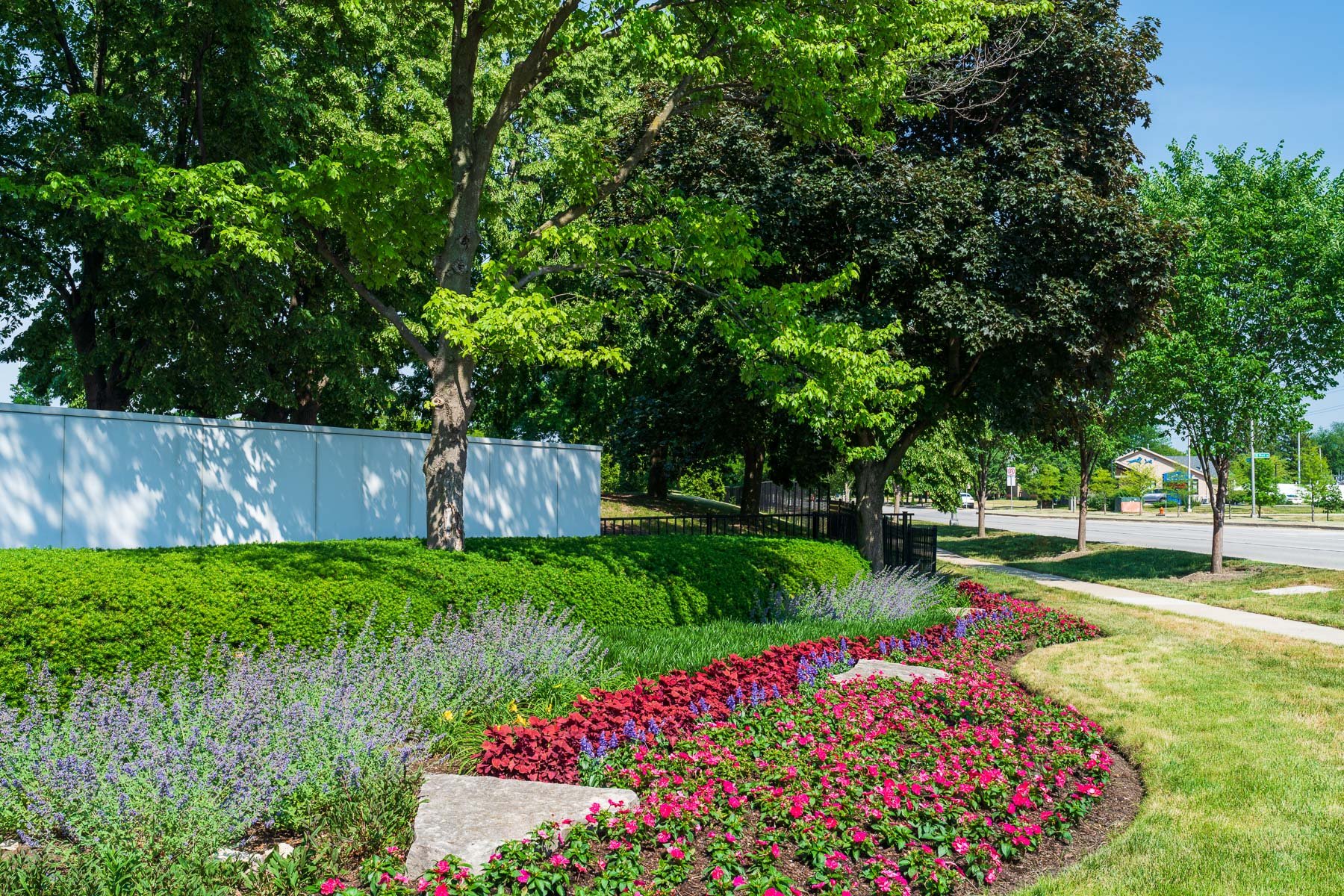
Strategic Enhancements That Make a Big Impact
The right upgrades and ongoing enhancements can elevate both the look and functionality of your site. Here’s how:
1. Add Seasonal Color with Purpose
Annual flower rotations keep your landscape feeling fresh and welcoming throughout the year.
Best practices:
- Start with spring bulbs like tulips and daffodils to lead into warmer months.
- Plant vibrant summer annuals in high-visibility areas such as entrances, signage, or patios.
- Choose hardy fall varieties like chrysanthemums, ornamental kale, and violas for end-of-season color.
- Use evergreens, boughs, and red twig dogwoods in winter to maintain interest.
Pro Tip: Grouping seasonal color near key areas like signage and entryways increases visual impact and draws attention where it matters most.
2. Introduce Functional Hardscaping
Hardscapes can do more than enhance beauty — they create structure, guide foot traffic, and boost property usability.
Ideas to consider:
- Courtyard fountains or sculptures to create focal points or gathering areas
- Benches and patios to encourage outdoor use by tenants and staff
- Planters and stone beds around signage or walkways
- Outdoor lighting to increase nighttime safety and highlight landscaping features
Safety Benefit: Hardscapes with proper drainage and non-slip materials also reduce liability on commercial sites.
3. Use Native Plants to Reduce Maintenance
Native species are naturally acclimated to Greater Chicago’s climate, soil, and pests. They’re hardy, low-maintenance, and beneficial to local biodiversity.
Benefits of native plantings:
- Require less water, fertilizer, and pesticides
- Attract pollinators like bees, butterflies, and birds
- Resist local pests and diseases better than exotic varieties
- Offer seasonal texture and color without frequent replacements
Long-Term ROI: Native landscaping offers beauty and ecological benefits while reducing long-term maintenance costs.
Sustainable Landscaping Practices
Sustainability isn’t just good for the environment — it’s good for your bottom line.
For commercial property managers in Greater Chicago, incorporating sustainable landscaping strategies means reducing resource use, lowering maintenance costs, and enhancing your site’s long-term health.
Key Sustainable Practices to Consider:
- Native plantings that thrive in Chicago’s climate with minimal inputs
- Smart irrigation systems that reduce water waste and avoid overwatering
- Functional drainage solutions like rain gardens and detention ponds
- Pollinator-friendly plant selections that support biodiversity
- Maintenance strategies like dormant pruning and mulch recycling to reduce waste
Whether your goal is LEED compliance, budget efficiency, or reduced liability, sustainable landscape practices help future-proof your property while still looking professional and polished.
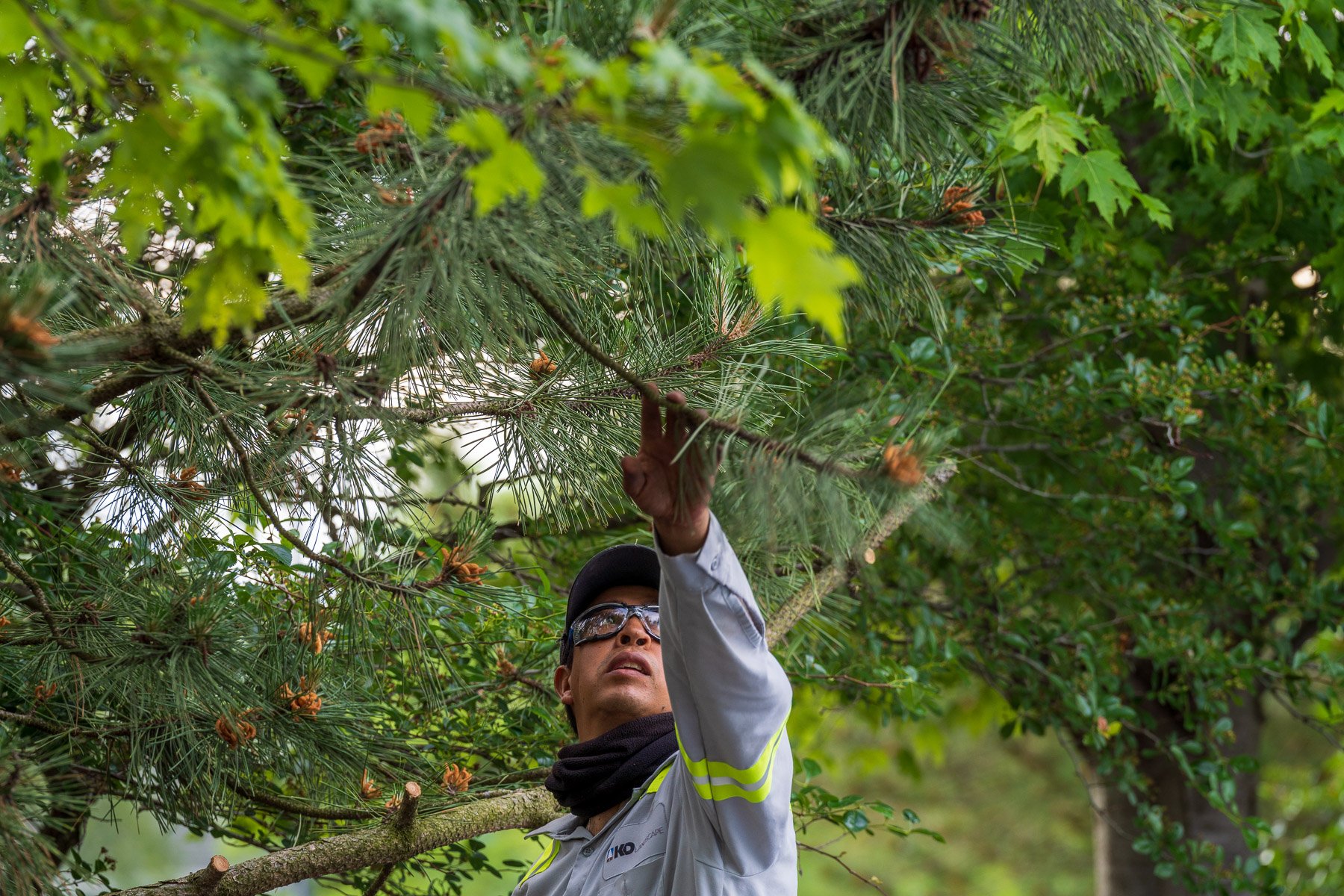
Choosing the Right Commercial Landscaping Company in Greater Chicago
When your reputation—and property value—depend on how your landscape looks and functions, choosing the right service provider isn’t just important. It’s critical.
From snow removal to seasonal planting to year-round lawn care, your landscaping partner should be proactive, reliable, and experienced in serving properties like yours across Chicagoland.

What to Look for in a Commercial Landscape Partner
Here are five essential qualities that define a trustworthy, high-performing landscape company:
1. Experience with Properties Like Yours
Not every landscape company is equipped to handle commercial sites with complex needs.
Look for a provider with experience maintaining:
- Business parks
- HOAs
- Industrial sites
- Healthcare or municipal campuses
They should understand the nuances of property usage, seasonal shifts, and safety standards required for these high-traffic environments.
2. Full-Service Capabilities
Your time is limited. A partner who offers comprehensive grounds management—from lawn care to irrigation to snow removal—eliminates the need for multiple vendors.
Ask if they provide:
- Routine landscape maintenance
- Seasonal cleanups and planting
- Snow and ice management
- Tree and shrub care
- Irrigation system maintenance
3. Clear Communication & Transparency
Your landscaping partner should act like an extension of your team. That means:
- Prompt communication
- Regular site walkthroughs
- Written service schedules and updates
- Fast response to issues or emergencies
Tip: Monthly check-ins and seasonal planning meetings help align services with your budget and goals.
4. Commitment to Safety & Liability Prevention
From icy sidewalks to uneven turf, landscaping can present serious risks if not managed properly. Look for a company with strong safety protocols and a proactive approach to:
- Slip-and-fall prevention
- Snow and ice management
- Routine hazard inspections
- Proper training and certifications
5. Local Expertise & References
A company that knows Chicagoland’s climate, regulations, and plant materials will deliver better long-term results. Don’t hesitate to ask for:
- Case studies or examples of similar properties
- Client references
- Evidence of performance during past snow seasons or droughts
Work with a Team That Understands Your World
At KD Landscape, we’ve helped property and facility managers across Greater Chicago reduce stress, improve curb appeal, and maintain beautiful, safe outdoor environments — year-round.
Whether you manage one property or ten, we’ll build a plan around your specific needs.
Let’s schedule a consultation to discuss how we can become your landscape partner.
A Smarter Approach to Landscape Maintenance in Chicagoland
Managing a commercial property in Greater Chicago means juggling priorities—from tenant satisfaction to budget approvals to year-round upkeep. Your landscape shouldn’t be another stress point.
By understanding the most common landscaping challenges, preparing for seasonal changes, and working with a proactive, full-service partner, you can maintain a property that’s not only functional but also enhances your reputation.
At KD Landscape, we specialize in helping property managers like you stay ahead of outdoor maintenance with customized plans, responsive service, and deep local experience.
- Get proactive.
- Get predictable results.
- Get a landscape partner you can trust.
Request a consultation today to simplify your maintenance, protect your budget, and make your property look great year-round.


